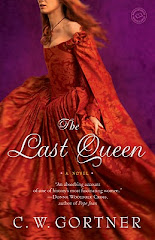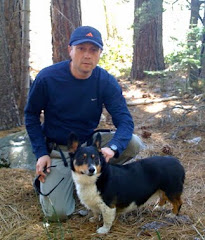I'm delighted to welcome Holly Tucker, whose debut BLOODWORK: A Tale of Medicine and Murder in the Scientific Revolution [W.W. Norton & Company; $25.95] will be published on March 21. This non-fiction narrative account of the first transfusion experiments of 1665-68 reads like the best  suspense, a riveting, often terrifying, tale of the fierce rivalries that erupted between scientists in Paris and London, including the notorious doctor, Jean Baptise Denis, who performed the first successful blood transfusion only to be framed for murder in a shocking case that scandalized Europe. Through Denis's case, Ms Tucker offers a portrait of a medical and scientific culture on the edge of history, yet overcome by superstition and fear; and in the process, holds up a mirror to our own modern-day research controversies.
suspense, a riveting, often terrifying, tale of the fierce rivalries that erupted between scientists in Paris and London, including the notorious doctor, Jean Baptise Denis, who performed the first successful blood transfusion only to be framed for murder in a shocking case that scandalized Europe. Through Denis's case, Ms Tucker offers a portrait of a medical and scientific culture on the edge of history, yet overcome by superstition and fear; and in the process, holds up a mirror to our own modern-day research controversies.
Please join me in welcoming Holly Tucker!
Detective Work, 17th century style
by Holly Tucker
Blood Work is a nonfiction murder mystery set in the scientific revolution. It centers around the first blood transfusions, which were animal-to-human and which took place over 150 years before the discovery of anesthesia and antisepsis. In December 1667, the renegade doctor Jean-Baptiste Denis transfused sever al ounces of calf’s blood into the veins of the best known men in Paris: Antoine Mauroy. Mauroy, a mental ill man, regularly roamed the streets of the elite Marais quarter. The idea was that blood transfusion would cool the vapors that were rising to Mauroy’s brain—and thereby relieve him of his symptoms.
al ounces of calf’s blood into the veins of the best known men in Paris: Antoine Mauroy. Mauroy, a mental ill man, regularly roamed the streets of the elite Marais quarter. The idea was that blood transfusion would cool the vapors that were rising to Mauroy’s brain—and thereby relieve him of his symptoms.
Denis’ experiments met with failure. Mauroy died. And in one of the history of medicine’s first malpractice cases, Denis was put on trial for the man’s murder. The courts eventually exonerated Denis of all charges—but they nonetheless ruled that Mauroy had been indeed murdered…by several other physicians. Blood transfusion was banned not long after and fell off the medical radar for nearly two more centuries.
To be honest, I felt a lot like Sherlock Holmes. I knew there had been a murder. But why? What was it about blood transfusion that would lead someone to kill? In the first year or two of research, I had my sights set on a single man. I can’t name him here—because he still figures prominently in the book. I spent weeks in the archives of the French Academy of Sciences in Paris pouring over case reports and experiment records. Nothing. I found nothing that would allow me to say with certainty that he did it.
I spent the months that followed feeling dejected. Maybe no one had ever revealed the names of the murderer or murderers because their identities were simply unrecoverable. Still, I refused to give up. I headed back to France, three more times. I worked in the archives of the Paris Faculty of Medicine and the French National Library, as well as in the special collections at the Méjanes Library in Aix-en-Provence. Nothing.
I was truly ready to throw in the towel and actually began to box up my research materials. One by one, I skimmed through the hundreds of documents and manuscript reproductions that I had collected. One by one, they went into the box.
The last days of any trip to archives are always frenzied. So many documents to look at—and no time left. I usually end up spending a fortune in reproduction fees just so I can keep working when I return back to the States. As I flipped through the documents, I recognized a stack of copies that I remembered from a much earlier trip to France. When they arrived by mail weeks after the trip, I had simply tossed them in with the rest.
weeks after the trip, I had simply tossed them in with the rest.
A few turns of the pages, and there it was. The smoking gun: a single letter written by a lawyer who was not directly involved in the transfusion trial but who was apparently outraged by the conspiracy. He named the murderous physicians—and once I had those names, I was stunned by how many clues they had left out in the open just waiting, almost proudly it seemed, to be discovered.
 suspense, a riveting, often terrifying, tale of the fierce rivalries that erupted between scientists in Paris and London, including the notorious doctor, Jean Baptise Denis, who performed the first successful blood transfusion only to be framed for murder in a shocking case that scandalized Europe. Through Denis's case, Ms Tucker offers a portrait of a medical and scientific culture on the edge of history, yet overcome by superstition and fear; and in the process, holds up a mirror to our own modern-day research controversies.
suspense, a riveting, often terrifying, tale of the fierce rivalries that erupted between scientists in Paris and London, including the notorious doctor, Jean Baptise Denis, who performed the first successful blood transfusion only to be framed for murder in a shocking case that scandalized Europe. Through Denis's case, Ms Tucker offers a portrait of a medical and scientific culture on the edge of history, yet overcome by superstition and fear; and in the process, holds up a mirror to our own modern-day research controversies.Please join me in welcoming Holly Tucker!
Detective Work, 17th century style
by Holly Tucker
Blood Work is a nonfiction murder mystery set in the scientific revolution. It centers around the first blood transfusions, which were animal-to-human and which took place over 150 years before the discovery of anesthesia and antisepsis. In December 1667, the renegade doctor Jean-Baptiste Denis transfused sever
 al ounces of calf’s blood into the veins of the best known men in Paris: Antoine Mauroy. Mauroy, a mental ill man, regularly roamed the streets of the elite Marais quarter. The idea was that blood transfusion would cool the vapors that were rising to Mauroy’s brain—and thereby relieve him of his symptoms.
al ounces of calf’s blood into the veins of the best known men in Paris: Antoine Mauroy. Mauroy, a mental ill man, regularly roamed the streets of the elite Marais quarter. The idea was that blood transfusion would cool the vapors that were rising to Mauroy’s brain—and thereby relieve him of his symptoms.Denis’ experiments met with failure. Mauroy died. And in one of the history of medicine’s first malpractice cases, Denis was put on trial for the man’s murder. The courts eventually exonerated Denis of all charges—but they nonetheless ruled that Mauroy had been indeed murdered…by several other physicians. Blood transfusion was banned not long after and fell off the medical radar for nearly two more centuries.
To be honest, I felt a lot like Sherlock Holmes. I knew there had been a murder. But why? What was it about blood transfusion that would lead someone to kill? In the first year or two of research, I had my sights set on a single man. I can’t name him here—because he still figures prominently in the book. I spent weeks in the archives of the French Academy of Sciences in Paris pouring over case reports and experiment records. Nothing. I found nothing that would allow me to say with certainty that he did it.
I spent the months that followed feeling dejected. Maybe no one had ever revealed the names of the murderer or murderers because their identities were simply unrecoverable. Still, I refused to give up. I headed back to France, three more times. I worked in the archives of the Paris Faculty of Medicine and the French National Library, as well as in the special collections at the Méjanes Library in Aix-en-Provence. Nothing.
I was truly ready to throw in the towel and actually began to box up my research materials. One by one, I skimmed through the hundreds of documents and manuscript reproductions that I had collected. One by one, they went into the box.
The last days of any trip to archives are always frenzied. So many documents to look at—and no time left. I usually end up spending a fortune in reproduction fees just so I can keep working when I return back to the States. As I flipped through the documents, I recognized a stack of copies that I remembered from a much earlier trip to France. When they arrived by mail
 weeks after the trip, I had simply tossed them in with the rest.
weeks after the trip, I had simply tossed them in with the rest.A few turns of the pages, and there it was. The smoking gun: a single letter written by a lawyer who was not directly involved in the transfusion trial but who was apparently outraged by the conspiracy. He named the murderous physicians—and once I had those names, I was stunned by how many clues they had left out in the open just waiting, almost proudly it seemed, to be discovered.
I remember vividly the day I knew for sure who did it. I called my husband in tears. At first, he was worried that something was horribly wrong…until he heard me whisper: “I found them.” It only took a few 300 years, but I had found them.
GIVEAWAY! One lucky reader will win a free copy of Bloodwork! To qualify, you must be located in the US or Canada, and be a follower of this blog. Enter by leaving a comment below. The winner will be announced on April 5.
GIVEAWAY! One lucky reader will win a free copy of Bloodwork! To qualify, you must be located in the US or Canada, and be a follower of this blog. Enter by leaving a comment below. The winner will be announced on April 5.
To learn more about Holly Tucker and her book, please visit her at her website.













13 comments:
Holly--great post. The book sounds fabulous!
I follow and would love to read this.
thank you
kaiminani at gmail dot com
I am a very literate goat
Ok you hooked me.. Line & sinker. Please enter ne in the drawing, I want to know whodunit!
This book looks great! Definitely is going to be on my 'To Be Read' list!
kimbers10[at]yahoo[dot]com
Holly, this book sounds interesting and I can't wait to get my hands on it. Thanks for bringing it to my attention. : )
Interesting subject in a period that interests me, and I would love to learn more.
This sounds absolutely fascinating. Wish I was eligible for the giveaway.
Sounds very intriguing, Holly. And your journey to write it sounds like "an instance of the fingerpost"!
I'm a follower- thank you for the giveaway!
Rachelhwallen@gmail.com
Fabulous - thanks for highlighting this exciting book! carrie468 - yahoo
This sounds like a great read! Thanks for the giveaway.
I am a follower.
Amy
tiger_fan_1997@yahoo.com
I was already excited about this book and now after reading this post, I'm even more intrigued!
I'm a follower.
Thank you for the giveaway!
truebookaddictATgmailDOTcom
The youngest vamp, Donovan, has finally fulfilled his great-great-great-great-great-grandfathe… destiny: To fulfill the "Das Wahre Liebe" (means "The True Love" in English). But I need help with the poem thing. What I have so far:
African Mango Plus
Post a Comment